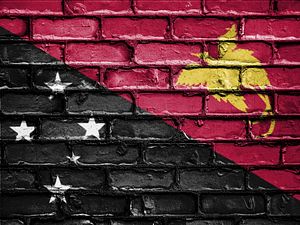The discussion of China, debt, and infrastructure, is beset by stereotypes. On the one hand, China would prefer to be seen as a development partner. According to this view, it’s a trusted, non-judgmental provider of expertise and technologies, giving countries a quick step to development. On the other hand, China is seen as setting debt traps, ensnaring smaller states in schemes that lead to the forfeiture of strategic assets. Research by Lee Jones and Shahar Hameiri has called the debt trap a “myth.” They argue that local factors, poor choices, and corruption lead to countries being swamped by debt. In this view, the loans offered by China are not predatory or strategic, just tactical and incremental.
They did, however, warn of the future, saying: “China will need to substantially restructure its approach if it wants to remain a major player in the Pacific without fulfilling the debt trap accusations of its critics.”
Looking to Papua New Guinea as an example, long before the debt trap comes the debt squeeze. In the telecommunications sector alone, Chinese firms have made large promises of new fiber optic connections, 4G towers, and data centers. At this stage the government of Papua New Guinea owes China’s Exim Bank $470 million for two projects, the NBN1 3/4G project and the Kumul undersea cable. Along with this, there is a further $56 million loan for the National Data Center. Following this, the government had no choice but to find further funding for maintenance and sustainment on these projects. Combined with billions of dollars of other debt, the government of Papua New Guinea now faces an uncertain future paying for these projects.
Now, years into this relationship between Papua New Guinea and China, what remains of those projects? The state-owned enterprise Dataco’s Kumul cable has 80 percent availability; of the hundreds of towers built during NBN1, a large portion are now broken; and the datacenter, famous for its questionable design choices, is broken. Huawei, for its part, put the blame squarely on the government of Papua New Guinea, saying the data center was built to government requirements.
This discussion has further impacts on the development of Papua New Guinea. While Huawei built the coastal cable around Papua New Guinea, Australia built the Coral Sea Cable into the country. The expectation, when the project launched, was that the price of internet access within Papua New Guinea would drop. However, well into the life of the project, internet costs within Papua New Guinea remain very high.
At this stage Dataco has been forced, by fiscal necessity, to use the Australian-financed Coral Sea Cable to cross-subsidize existing debts to China’s Exim Bank. Other government funds, which would be otherwise committed to sustaining and maintaining projects, are being sucked up by extraordinary debt loads. While not a debt trap, the money owed to China is a major yoke weighing down Papua New Guinea’s telecommunications development. The Papua New Guinea government is acutely aware of this.
With many of the towers from the NBN1 project broken due to the need to pay down debt rather than fund maintenance, the proposed phase two of the project within Papua New Guinea has so far been put on hold. Efforts by China to push the issue have been met with quiet rebuke by the last two prime ministers. Having been trusting of China’s approach to the country earlier, Papua New Guinea’s leaders are now much more careful.
China, for its part, struggles culturally within the Pacific Islands. Tempers flared in 2018 when the foreign minister of Papua New Guinea was forced to call local police after a group of Chinese officials tried to barge into his office.
This leaves China in a difficult spot. Papua New Guinean officials certainly like to have a number of countries bidding for their attention, but Melanesian culture does not take kindly to violations of respectful protocol by apoplectic wolf warriors. Huawei too is in a difficult spot, all of its major projects in the country being spectacular failures. Australia’s projects may be facing hurdles in terms of getting to the point of full benefit, but the quality of delivery is not in question, and many of the issues facing them relate to the inability of China deliver on its part of the deal.
Going forward from here, Australia and Papua New Guinea face the prospect of a full rebuild of much of the telecommunications infrastructure within the country and China faces a much more skeptical partner in the region. External debate over whether this constitutes a debt trap for Papua New Guinea might well be putting the bar too high. Papua New Guinea is well inside a China debt squeeze that is fundamentally restricting its ability to develop and sustain telecommunications advances.
Robert Potter is a fellow at the Centre for Rule-Making Strategies in Tokyo and the CEO of Internet 2.0. Prior to this he was a ministerial advisor in the Australian Government. He was also a visiting scholar at Columbia University.

































